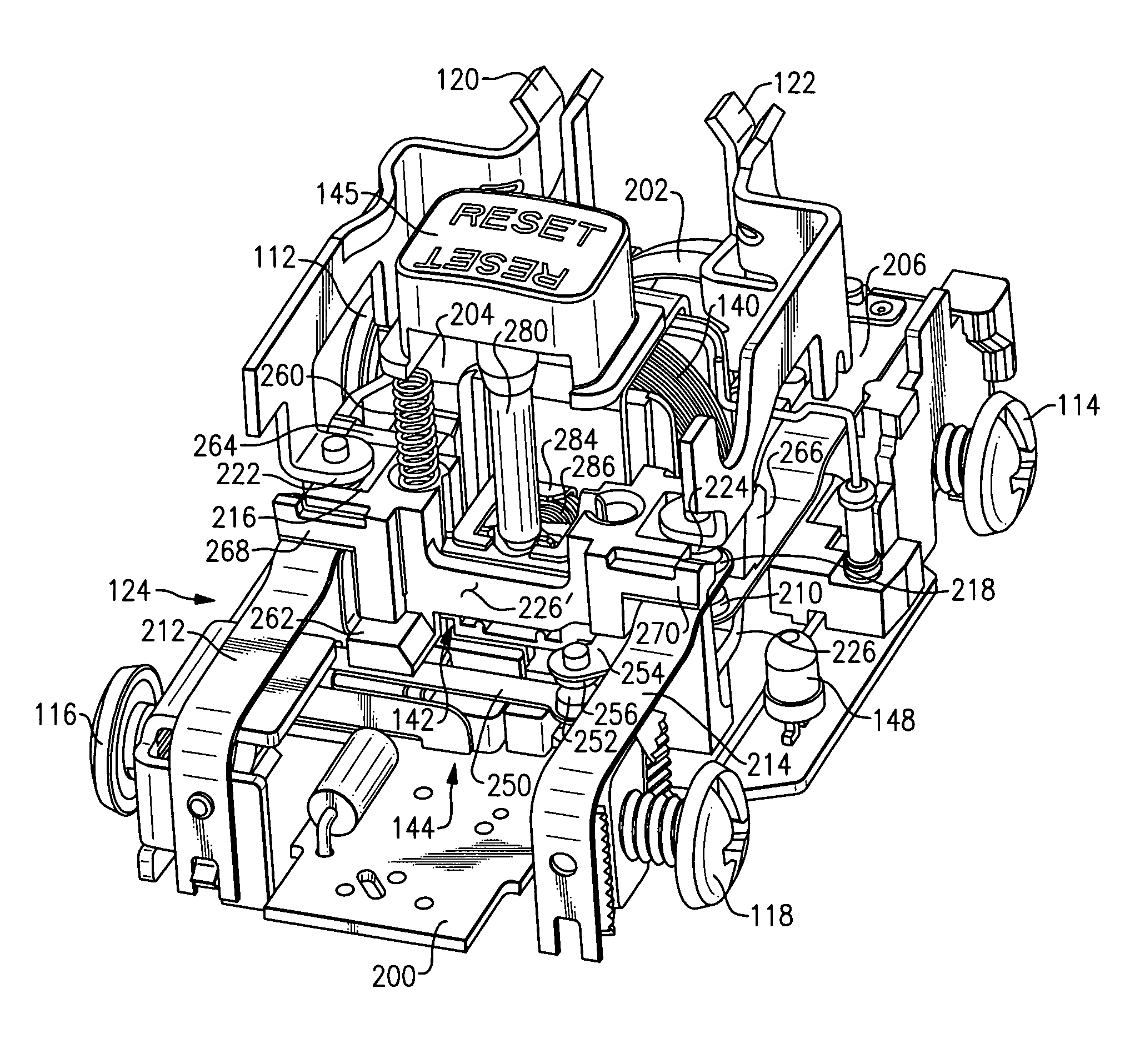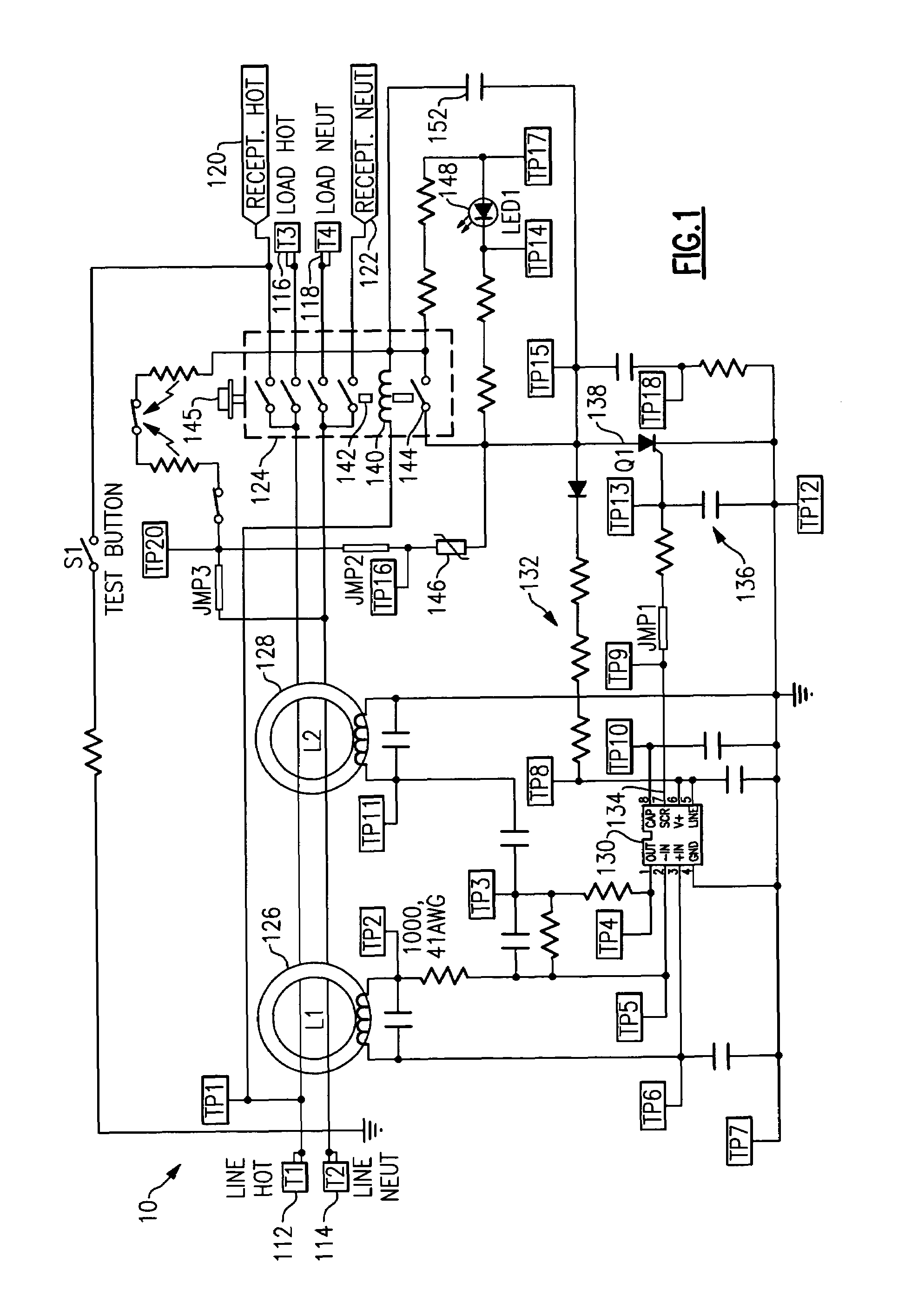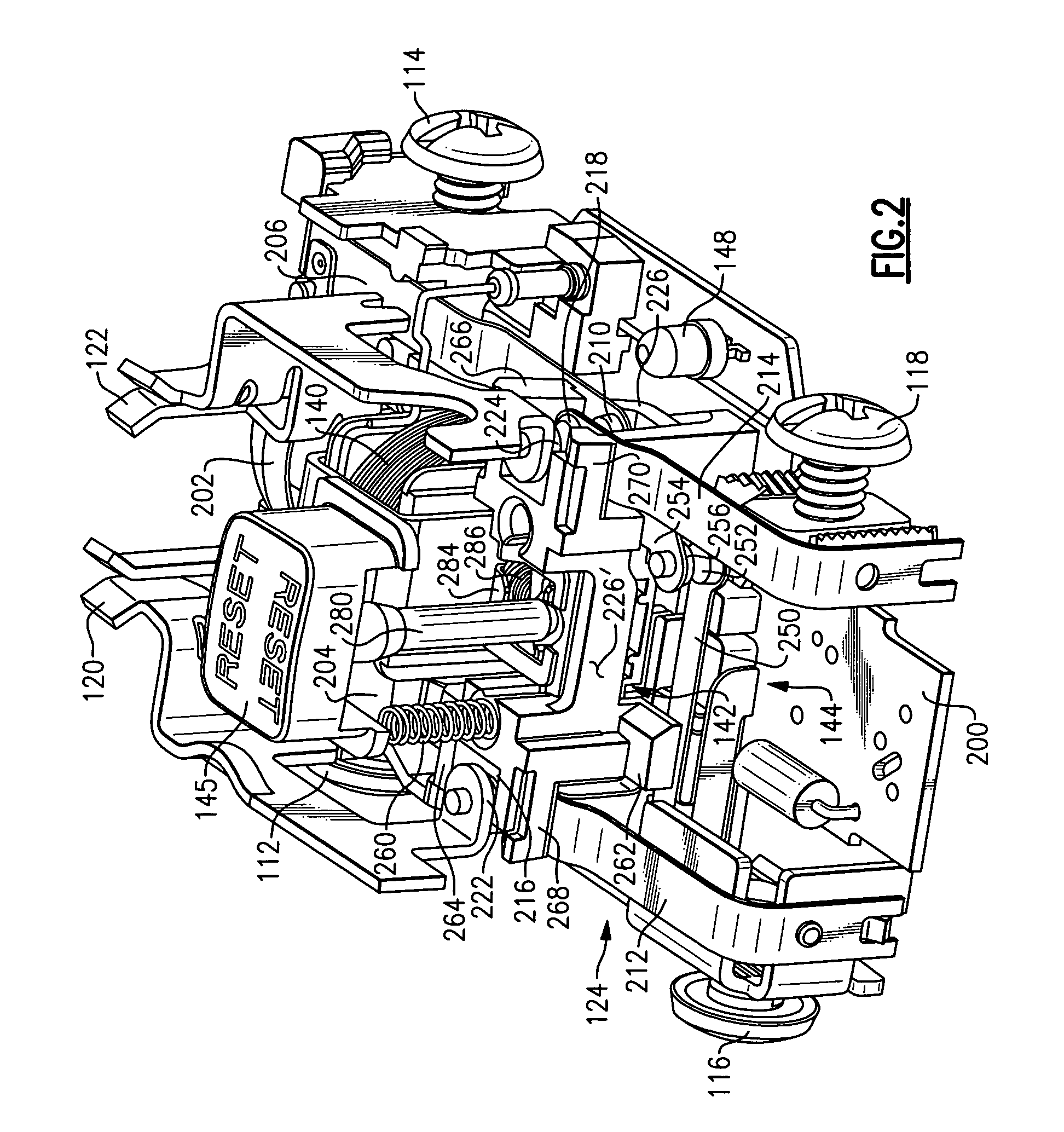Protective device with an auxiliary switch
a protection device and auxiliary switch technology, applied in the direction of circuit-breaking switches, emergency protective arrangements for limiting excess voltage/current, coupling device connections, etc., can solve the problems of electrical wiring system certain types of faults, electrical connectivity breakage, electrical shock hazards, etc., to improve reliability.
- Summary
- Abstract
- Description
- Claims
- Application Information
AI Technical Summary
Benefits of technology
Problems solved by technology
Method used
Image
Examples
Embodiment Construction
[0031]Reference will now be made in detail to the present exemplary embodiments of the invention, examples of which are illustrated in the accompanying drawings. Wherever possible, the same reference numbers will be used throughout the drawings to refer to the same or like parts. An exemplary embodiment of the protective device of the present invention is shown in FIG. 1, and is designated generally throughout by reference numeral 10.
[0032]As embodied herein, and depicted in FIG. 1, a schematic of a circuit protection device 10 in accordance with an embodiment of the present invention is disclosed. GFCI 10 includes ground fault interrupter circuitry. Device 10 includes line terminals 112, 114, load terminals 116, 118, and receptacle terminals 120, 122. Load terminals 116, 118 may also be referred to as feed-through terminals. As noted above, these terminals may be connected to wiring configured to provide power to downstream receptacles or switches. Receptacle load terminals 120,122...
PUM
 Login to View More
Login to View More Abstract
Description
Claims
Application Information
 Login to View More
Login to View More - R&D
- Intellectual Property
- Life Sciences
- Materials
- Tech Scout
- Unparalleled Data Quality
- Higher Quality Content
- 60% Fewer Hallucinations
Browse by: Latest US Patents, China's latest patents, Technical Efficacy Thesaurus, Application Domain, Technology Topic, Popular Technical Reports.
© 2025 PatSnap. All rights reserved.Legal|Privacy policy|Modern Slavery Act Transparency Statement|Sitemap|About US| Contact US: help@patsnap.com



